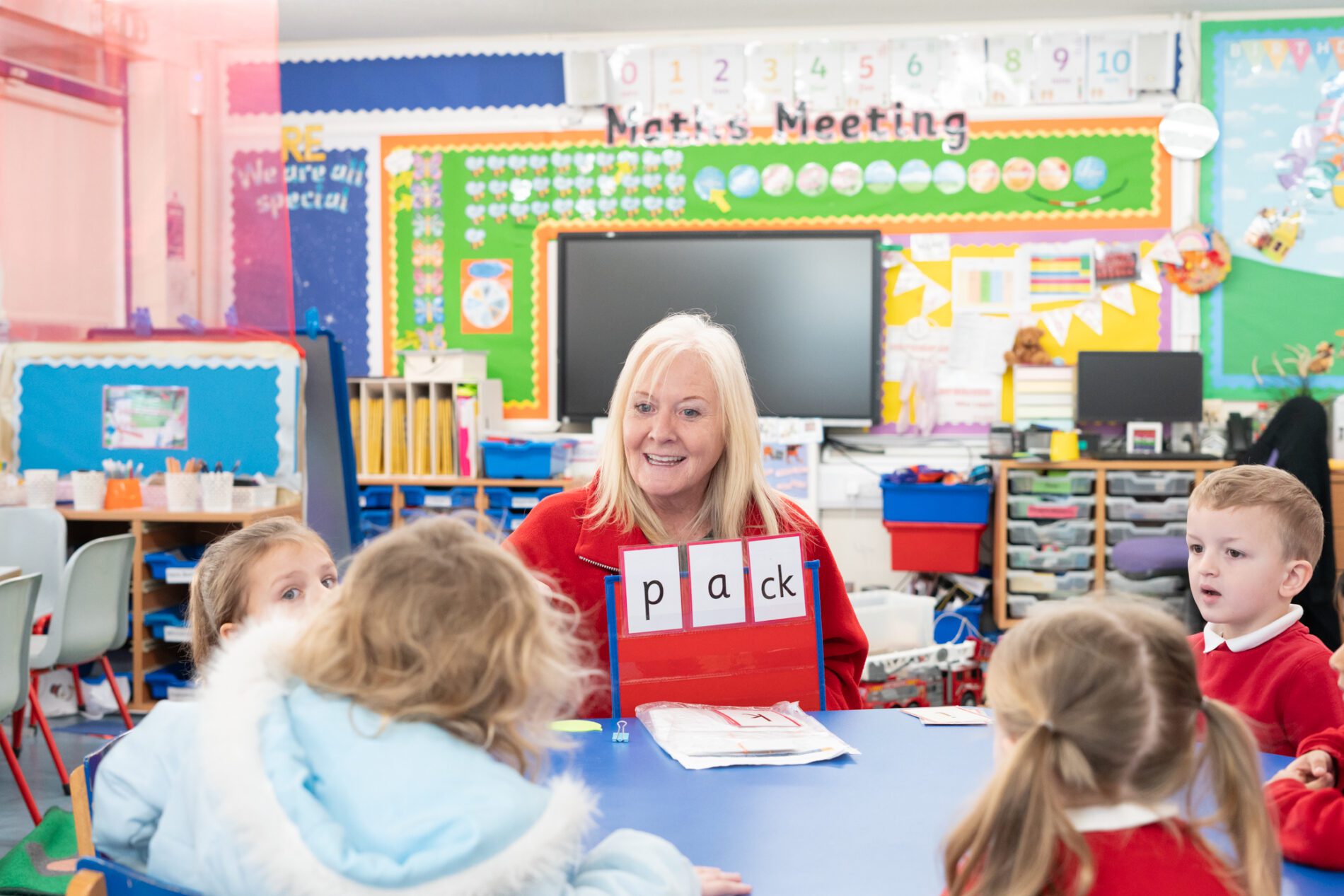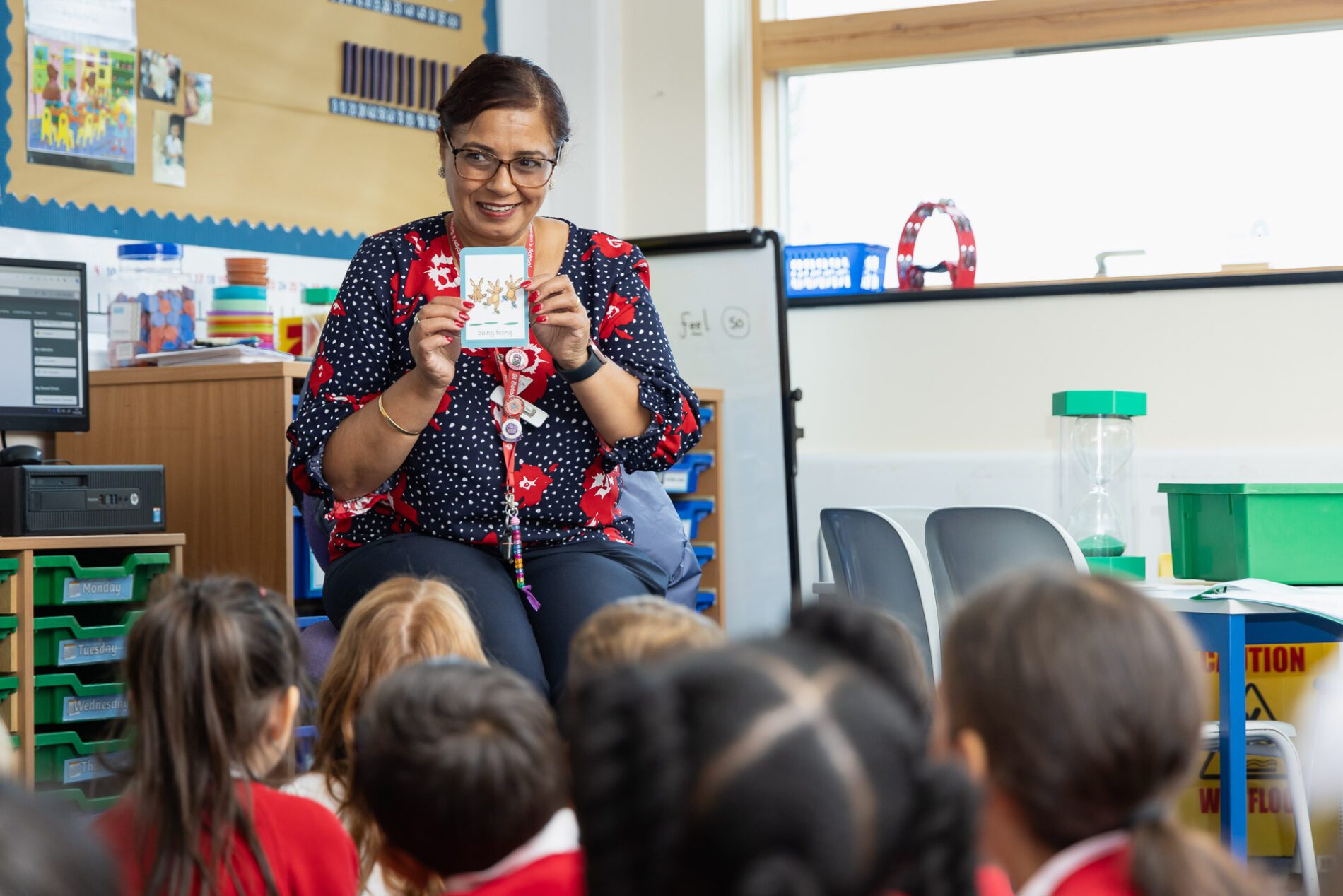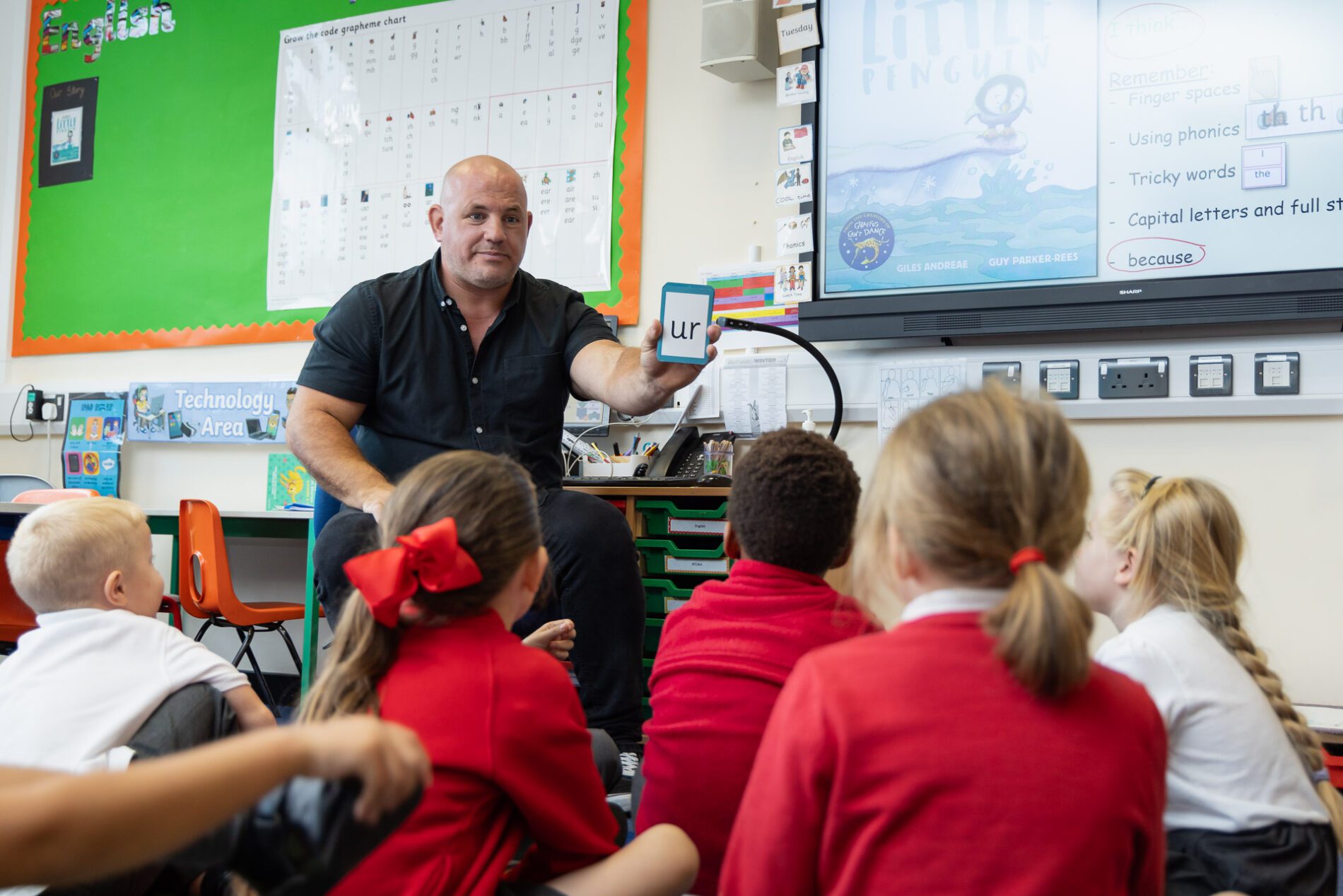Phonics Subject Leader: Mrs S Shaw
For any more information on St Botolph’s Phonics Curriculum, please get in touch with the office.
Phonics is a combination of skill and knowledge which aims to build children’s speaking and listening skills in their own right as well as to prepare children for learning to read and spell. At St. Botolph’s C of E Primary School, phonics and early reading is taught using the structure of our systematic synthetic programme ‘Little Wandle Letters and Sounds Revised’.

Intent
At St Botolph’s, we teach reading through Little Wandle Letters and Sounds Revised, which is a systematic and synthetic phonics programme.
By starting to teach phonics in Reception and following the stated programme progression, we intend for our pupils to build on their growing knowledge of the alphabetic code, mastering phonics to read and spell as they move through school. As a result, we aim for all our children to be able to tackle any unfamiliar words as they read. We also model the application of the alphabetic code through phonics in shared reading and writing, both inside and outside of the phonics lesson and across the curriculum. At St Botolph’s, there is a strong focus on language development for our children because we know that speaking and listening are crucial skills for reading and writing in all subjects.


Implementation
How we teach phonics
- In reception and Year 1, children follow the progression within the Little Wandle Letters and Sounds Revised programme. Phonics is taught daily.
- By the end of reception, children will have been taught up to the end of phase 4.
- By the end of Year 1, children will have been taught until the end of Phase 5.
- Reception lessons start at 10 minutes, with additional oral blending daily, increasing to 30 minutes as soon as possible.
- Year 1 lessons are 30 minutes long.
- In Year 2, phonic lessons are taught three times a week to children where appropriate – following the model of Little Wandle.
Reading practice sessions
We teach children to read through reading practice sessions three times a week. These sessions:
- are led by a fully trained adult to small groups.
- use books matched to the children’s secure phonic knowledge using the Little Wandle Letters and Sounds Revised assessments.
- are monitored by the class teacher, who rotates and works with each group on a regular basis.
Each reading practice session has a clear focus, so that the demands of the session do not overload the children’s working memory. The reading practice sessions have been designed to focus on three key reading skills:
- decoding
- prosody: teaching children to read with understanding and expression
- comprehension: teaching children to understand the text.
Children who are not yet decoding have daily additional blending practice in small groups or 1:1 with a trained adult, so that they quickly learn to blend and can begin to read books.
Impact
Assessment is used to monitor progress and to identify any child needing additional support as soon as they need it.
Assessment for learning is used:
- daily within class to identify children needing Keep-up support sessions.
- weekly in the Review lesson to assess gaps, address these immediately and secure fluency of GPCs, words and spellings.
Summative assessment is used:
- every six weeks to assess progress, to identify gaps in learning that need to be addressed, to identify any children needing additional support and to plan the Keep-up support that they need.
The statutory Phonics Screening Check is sat by children in Year 1. Any child not passing the check re-sits it in Year 2. Also in Year 2, children are assessed through their teacher’s ongoing formative assessment as well as through the half-termly Little Wandle Letters and Sounds Revised summative assessments.


Phonics in Each Stage
Phonics starts within the first three weeks of Reception, with lessons starting at 10 minutes and building towards 30 minutes over the year. Before entering Year 1, the children will have been taught up to Phase 4. By Term 3, children begin reading practise sessions in Year R. The children apply their learning to reading a book in a small group setting, three times a week. At the beginning of each session, the children go over different sounds, words and common exception words that will be in the text and then have the opportunity to read through the text at their own pace. The first session focuses on decoding and identifying words and sounds in the text, the second session focuses on prosody (becoming a reader and reading with expression) and the third session focuses on comprehension.
In year 1, we will review phases 3 and 4 (these have been taught in reception). We then go on to introduce phase 5. Phase 5 learning contains alternative graphemes for previously taught phonemes and spelling patterns.
Just like Year R, Children in Year 1 will participate in Reading Practice Sessions with a teacher. The books the children will be reading in these sessions are the Big Cat Little Wandle Books. These books will be carefully matched to the child’s current reading level. The children will read the same book three times, focusing on different reading skills in each session. The three focuses are decoding, prosody and comprehension.
Year 2 begin the year by spending two terms revising Phase 5 (taught in Year 1), this will include applying Phase 5 into their writing and spelling. We timetable daily phonics catch ups for any child in Year 2 or 3 who is not fully fluent at reading or has not passed the Phonics Screening Check. These children urgently need to catch up, so the gap between themselves and their peers does not widen. We use the Little Wandle Letters and Sounds Revised assessments to identify the gaps in their phonic knowledge and teach to these using the Keep-up resources – at pace.
SEND Information
Children in Reception and Year 1 who need extra support with their phonics through interventions will also be read with an adult 1:1 more frequently.
At St. Botolph’s C of E Primary School, we have begun to use the Little Wandle SEND programme for those who need extra support and a personalised learning structure. This gives those children that need adaptive teaching and learning to meet their needs the necessary support in class to fully access the supported Phonics curriculum. Daily interventions take place for these children during the whole class phonics teaching. The children do not attend the whole class phonics lesson and their individual phonics programme to manage their cognitive overload. The above areas are robustly and continuously monitored to ensure any gaps in learning are addressed.
Phonics Assessments
Phonics Screening Check
Children in Year 1 throughout the country will all be taking part in a Statutory Phonics Screening Check in June. Children in Year 2 will also take the check if they did not achieve the required result when in Year 1 or if they have not taken the test before. The phonics screening check is designed to confirm whether individual children have learnt phonic decoding and blending skills to an appropriate standard.
What Happens During the Screening?
The test contains 40 words. Each child will sit one-to-one and read each word aloud to their teacher. The test will take approximately 10 minutes per child, although all children are different and will complete the check at their own pace. The list of words the children read is a combination of 20 real words and 20 pseudo words (nonsense words). The pseudo words will be shown to your child with a picture of an alien. This provides the children with a context for the pseudo word which is independent of any existing vocabulary they may have. Pseudo words are included because they will be new to all pupils; they do not favour children with a good vocabulary knowledge or visual memory of words. We prepare children by introducing them to ‘alien’ words throughout their daily lessons using sounds that they have learnt. The pass mark last year was 32/40.
KS2 – Phonics
If the children need further support in their Phonics when they move into KS2, they will be put in an intervention that is tailored to them.
Home Learning
Supporting your child with reading
Although your child will be taught to read at school, you can have a huge impact on their reading journey by continuing their practice at home.
There are two types of reading book that your child may bring home:
A reading practice book. This will be at the correct phonic stage for your child. They should be able to read this fluently and independently.
A sharing book. Your child will not be able to read this on their own. This book is for you both to read and enjoy together.
Reading practice book
This book has been carefully matched to your child’s current reading level. If your child is reading it with little help, please don’t worry that it’s too easy – your child needs to develop fluency and confidence in reading.
Listen to them read the book. Remember to give them lots of praise – celebrate their success! If they can’t read a word, read it to them. After they have finished, talk about the book together.
Sharing book
In order to encourage your child to become a lifelong reader, it is important that they learn to read for pleasure. The sharing book is a book they have chosen for you to enjoy together.
Please remember that you shouldn’t expect your child to read this alone. Read it to or with them. Discuss the pictures, enjoy the story, predict what might happen next, use different voices for the characters, explore the facts in a non-fiction book.
The main thing is that you have fun!
Phonics Extra Resources
The resources on this page will help you support your child with saying their sounds and writing their letters. There are also some useful videos so you can see how they are taught at school and feel confident about supporting their reading at home. On this page you will also find our full Reception and Year 1 teaching programme overview to see what your child will learn and when.

